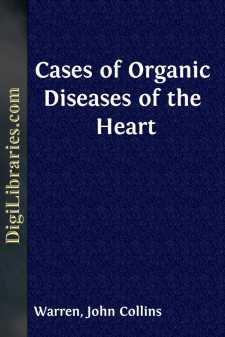Categories
- Antiques & Collectibles 13
- Architecture 36
- Art 48
- Bibles 22
- Biography & Autobiography 813
- Body, Mind & Spirit 142
- Business & Economics 28
- Children's Books 17
- Children's Fiction 14
- Computers 4
- Cooking 94
- Crafts & Hobbies 4
- Drama 346
- Education 46
- Family & Relationships 57
- Fiction 11829
- Games 19
- Gardening 17
- Health & Fitness 34
- History 1377
- House & Home 1
- Humor 147
- Juvenile Fiction 1873
- Juvenile Nonfiction 202
- Language Arts & Disciplines 88
- Law 16
- Literary Collections 686
- Literary Criticism 179
- Mathematics 13
- Medical 41
- Music 40
- Nature 179
- Non-Classifiable 1768
- Performing Arts 7
- Periodicals 1453
- Philosophy 64
- Photography 2
- Poetry 896
- Political Science 203
- Psychology 42
- Reference 154
- Religion 513
- Science 126
- Self-Help 84
- Social Science 81
- Sports & Recreation 34
- Study Aids 3
- Technology & Engineering 59
- Transportation 23
- Travel 463
- True Crime 29
Remarks on some fossil impressions in the sandstone rocks of Connecticut River
Description:
Excerpt
In the course of the year 1851, an account was circulated of the discovery of an immense egg, or eggs, in the Island of Madagascar. The size of the eggs spoken of was so disproportionate to that of any previously known, that most persons received the account with incredulity; and, I must confess, I was one of this number. Being in Paris soon after hearing of this report, I made inquiry on the subject, and was surprised to learn, that the great egg was actually existing in the Museum of Natural History in Paris. In a few days I had an opportunity of seeing a cast of it in the hands of the artist, M. Strahl, of whom I solicited one. He informed me that it could not be obtained at that moment; but that, if my request were made known to the Administration of the Museum, he had no doubt they would accede to it. I accordingly did apply, and also presented them with the cast of a perfect head of Mastodon Giganteus; and they very liberally granted my request.
The distinguished naturalist, Professor Geoffroy St. Hilaire, the second of that honorable name, has made a statement to the Academy of Sciences, which, though only initiatory, contains many facts of a very interesting nature, some of which I have had an opportunity of verifying; and to him we are indebted for a greater part of the others.
The eggs sent to me are, in number, two; one of which was purchased by M. Abadie, captain of a French vessel, from the natives. Another was soon afterwards found, equal in size. A third egg was discovered in an alluvial stratum near a stream of water, together with other valuable relics of the animal which had probably produced them; but, unfortunately, it was broken during transportation. Of the two eggs, one is of an ovoid form, having much the shape of a hen's egg; and the other is an ellipsoid.
The ovoid egg is of enormous size, even when compared with the largest egg we are acquainted with. Its long diameter exceeds thirteen inches of our English measure, its short diameter eight, and its long circumference thirty-three inches. Its capacity is thought to be equal to eighteen liquid pints, or to be six times greater than that of the largest egg known to us (the ostrich), although but twice its length. It is said to be equal to a hundred and forty-eight hen eggs. The ellipsoid egg has its longest diameter somewhat less than that of the ovoid; its short diameter nearly equals that of the other egg, being more than eight inches. The third egg, although broken, has been very useful to science, by displaying the thickness of the shell, which is about one-tenth of an inch.
The bones, of which I have received the casts, are three in number, and of great interest. One of them is a characteristic fragment of the upper part of a fibula; the other two, still more interesting, as enabling us to determine the class and genus of the animal to which they belong, exhibit the extremities of the right and left tarso-metatarsal bones. The former is somewhat broken; the latter is nearly perfect, and exhibits the triple division of the inferior extremity of the bone into the three trochleæ or pulley-shaped processes of the struthious birds. It might be mistaken for a bone of the great Dinornis, but is distinguished from this by the flatness of the portion above the trochleæ. Still less is it one of the bones of the ostrich, its three pulleys being separated from each other by distinct intervals; whereas the pulleys of the ostrich have only one such separation, constituting two distinct eminences.
M. Geoffroy St. Hilaire considered himself justified, from these and other facts, in deciding this bone to belong to a bird of a new genus, to which he gives the name of Epyornis, from αá¼°πá½»ς, high, tall, and á½âρνις, bird; and, as probably it is a specimen of the largest animal of the family, he affixes the specific name of maximus.
The size of this bird, inferred from that of its egg, would be vastly superior to that of the ostrich....



